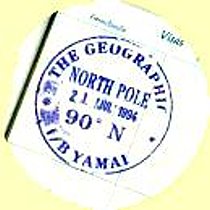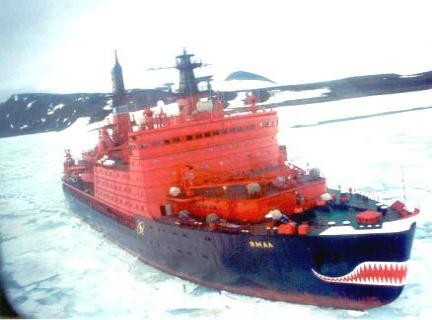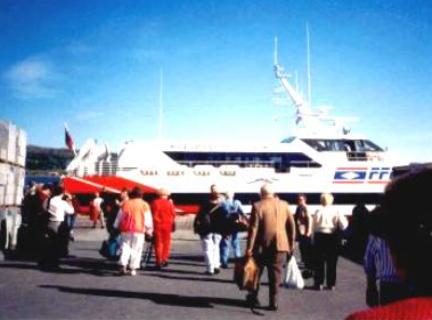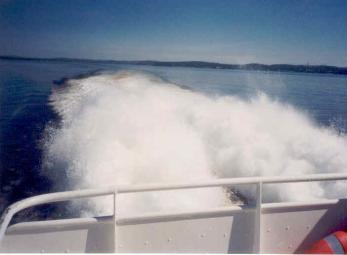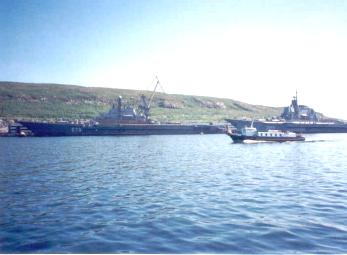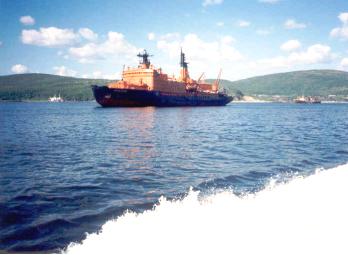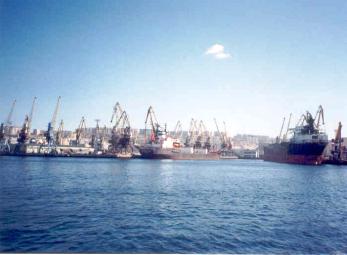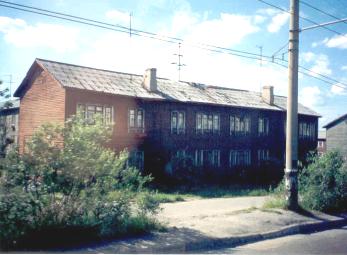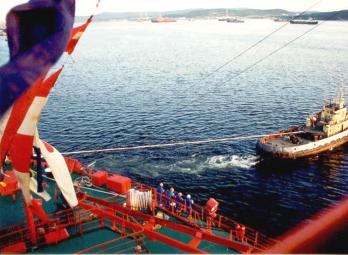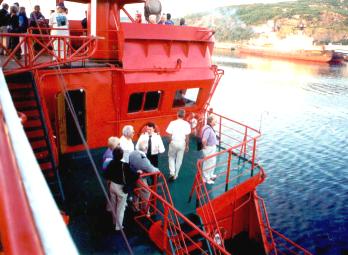Our voyage on the Yamal, flagship of the Russian nuclear
icebreaker fleet, began on the Kola Peninsula, until recently
one of the most closely-guarded military areas in the former Soviet Union.
With Russian sailors waving to us from dockside, we cast off to the accompaniment of three
stentorian blasts of the ship's horn, the captain's traditional
way of bidding farewell to Murmansk. As the echoes rolled around the low
hills surrounding the city, we sailed majestically up the fjord past missile submarines
and aircraft carriers, past five other atomic icebreakers, past
a secret city that until 1991 was not even on the map, and out into
the gentle swell of the Barents Sea. As I stood alone on the
top deck in the 10pm summer daylight of northern Russia, it occurred
to me that although I had done a few interesting things in my life, being on
a nuclear icebreaker as it headed for the North Pole definitely qualified as the most unreal thing I had ever
done. |

